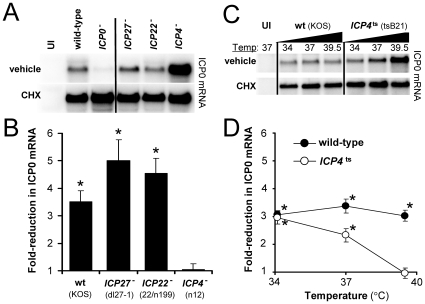Figure 6. De novo repression of HSV ICP0 gene expression is ICP4-dependent.
(A) Representative Northern blot of ICP0 mRNA in Vero cells that were uninfected (UI) or were inoculated with 2.5 pfu per cell of HSV-1 KOS (wild-type), n212 (ICP0 −), dl27-1 (ICP27 −), 22/n199 (ICP22 −), or n12 (ICP4 −), which were treated with vehicle or 200 µM cycloheximide from −0.5 to 6 hours p.i., at which time total RNA was harvested (10 µg per lane). (B) Mean ± sem fold-reduction in ICP0 mRNA levels in vehicle-treated cells relative to cycloheximide-treated controls (fold-reduction = mRNACHX÷mRNAVEH; n = 4 per group). (C) Representative Northern blot of ICP0 mRNA in Vero cells inoculated with 2.5 pfu per cell of KOS (ICP4 +) or HSV-1 tsB21 (ICP4 ts). Vehicle- and cycloheximide-treated cultures were incubated in CO2 chambers at 34.0, 37.0, or 39.5°C, and total RNA was harvested at 6 hours p.i. (10 µg per lane). (D) Mean ± sem fold-reduction in ICP0 mRNA levels plotted as a function of incubation temperature (fold-reduction = mRNACHX÷mRNAVEH; n = 4 per group). In panels B and D, asterisks denote fold-reductions in ICP0 mRNA that significantly differ from the value of 1, which is predicted by a null hypothesis that cycloheximide will have no effect on ICP0 mRNA accumulation in HSV-infected cells (p<0.01; two-tailed Student's t-test).

